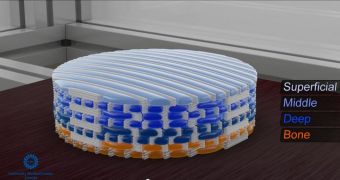Officials with the University of Utrecht (UMC) have recently announced that they plan to embark on a very ambitious program that will enable them to print biological structures, such as living tissues and entire organs, using specialized 3D printers. The Utrecht Biofabrication Facility (UBF) will be opened to house the new manufacturing center.
The original investment exceeds €775,000 ($1.05 million), and will go towards researching more data on biocompatible 3D printed products, and purchasing the necessary high-tech equipment. This project is the brain child of scientists at the Utrecht Science Park.
The UBF will soon house a special set of 3D bioprinters, which will be capable of depositing living cells on a substrate layer-by-layer, thus reconstructing organs in three dimensions. There are significant potential applications for such a device in the medical sector.
Patients with bone defects, for example, could receive custom-made prosthetics that fill the holes left by their missing tissues perfectly. The blueprints for each medical aid will be collected through magnetic resonance imaging or computed tomography scans, and the printers will create the required prosthetics based on these very precise measurements.
Experts with the Utrecht Science Park say that they plan to install both a BioScaffolder and a regular FDM/Stereolithography 3D printer in the new facility. These devices will be used to study the feasibility of printing with biocompatible materials that are not rejected by the human body.
“Instead of waiting until a joint is almost completely worn out, we can study how to simulate or stimulate the body’s natural healing process with a piece of bone or cartilage that has been produced layer by layer by a bioprinter,” says Dr. Jos Malda, one of the experts behind this new project.
“By adjusting the printing temperature and the use of a special ‘bioink’ developed in Utrecht, it is possible to print 3D structures using living cells. The fact that tissue structures must not only be three dimensional, but also perform a function, makes it more complex,” the faculty member explains.
The UBF will feature two clean rooms, each outfitted with bioprinters and cell culture facilities. All work and cell manipulation will be done in sterile environments. Despite being so advanced, the facility will allow access for UMC students, thus becoming the only publicly-accessible 3D bioprinting facility in the world.

 14 DAY TRIAL //
14 DAY TRIAL //